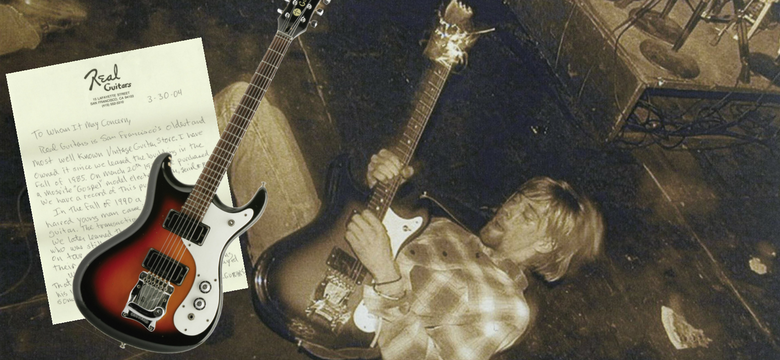In the 1950s, the average American home had a piece of furniture called a telephone table, a simple wooden seat with an attached ledge to place the family’s rotary dial phone. You can easily find these run-of-the-mill tables at your average flea market, estate sale or antique shop.
The price? Usually about 50 bucks. No great shakes for a (frankly rather uncomfortable) wooden bench.
Why then did one collector pay a whopping $5,676 for the same, obsolete table that can be found everywhere? What makes one telephone table worth $50 and another worth 113x that amount?
One word: provenance.
Provenance is a collectible’s documented record of ownership or history that can tremendously increase the value of even the most common of objects.
Elvis Presley Vintage Telephone Table Sold at Auction
In this case, the telephone table came directly from a nice suburban house east of downtown Memphis – the home a 21-year-old Elvis Presley purchased and furnished for his family with the royalty money from his very first national hit, Heartbreak Hotel. Presley’s next home (purchased just 13 months later) was the much less obscure compound we now call Graceland. For this particular collectible, a certificate of authenticity was given with the table upon leaving the estate. This certificate acts as the provenance for the table, and without it, the antique likely would have no proven worth.
Buy, Value or Appraise Your Entertainment Memorabilia
Bid or buy entertainment memorabilia for sale, value your item, or request a free appraisal to sell your collection.
How to Prove the Provenance of a Collectible Item
Depending on the item, the provenance may need to be proven in more ways than one. Therefore, it is essential to hold on to all possible proof that your item is what you say it is. Listed below are the most common options for proving the worth of a collectible.
Certificates of Authenticity
A Certificate of Authenticity is only as authentic as the company issuing the document. Therefore, be sure to make sure that the company issuing the COA is reputable. For example, Cartoon Network issues one every time it sells one of its production cels. This certificate allows dealers to resell the artwork with a verified document from the production company itself. If the COA comes from a company with a reputation for analyzing and researching artifacts and memorabilia, the company’s reputation creates a viable form of provenance.
Original Receipts
Receipts are a great way to prove the origin of a certain collectible. This not only establishes a paper trail, it also provides a readily available source of authenticity. Original receipts can be traced back to auction houses, estate sales or the celebrity or company from which an item was purchased. To go even further, receipts offer the strongest provenance when they include clear-cut descriptions of the items in question.
Gift Documentation/Handwritten Notes/Autographs
Celebrities or persons of interest typically will include a handwritten note or autograph with the item which, when paired with a photograph, can establish an excellent source of provenance. For example, Stan Lee is one of the most well-known comics writers, and signs a vast number of comics each year. Fans who get Lee to sign a comic typically will take a picture of him either signing the comic, or will receive a COA with the signature. Some comic conventions take it a step further and provide on-site verification by a third-party grading company, which will grade and place the comic in a sealed case with a yellow label indicating authenticity. This establishes provenance within the comic community that is difficult to refute. For other handwriting and harder-to-verify notes and inscriptions, bring in an expert to authenticate the item. Experts often can check the time period of the material in question and can verify the source’s reliability.
Photographs
Photographs are considered to be solid evidence and will bolster any case for verifying an item’s true beginnings. For instance, Heritage auctioned one of Elvis Presley’s coveted rings. The ring was accompanied by a picture of him wearing the ring on his right hand (closest to the camera), and also by a letter of authenticity. Photographs are a surefire way to create provenance, but be sure the item in the photo matches precisely with the item being offered.
Other
Family members of a famous individual also can provide sincere forms of authenticity. Getting a letter of authenticity, or LOA, is a way to create provenance. In 1991, James Allen “Al” Hendrix, the father of legendary guitarist Jimi Hendrix, gave some of his son’s personal property to a company called Concerts West. This company managed bookings, travel arrangements and concert security for Hendrix’s shows. The transfer of Jimi’s property was accompanied with an LOA from Al Hendrix that reads, in full: “This long velvet vest with different shaped design on the front and the back in various colors and orange trim thread with 5 cloth loops and cloth balls down the front belonged to my son Jimi Hendrix.” This document provided provenance, and reassured buyers of the authenticity of Hendrix’s personal items.
With the proper form of provenance, some simple items can be proven to be priceless collectibles. If you have questions about what your item is worth, consult an expert through Heritage.
